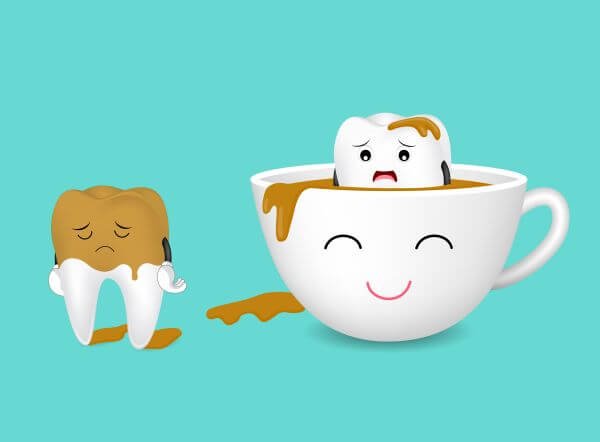Coffee is a beloved morning ritual for millions, but have you ever wondered if your daily cup could be affecting your smile? Many people notice their teeth looking less bright over time and wonder if coffee is to blame. Understanding how coffee interacts with your teeth can help you enjoy your favorite brew without sacrificing your pearly whites.
You might be surprised to learn that coffee can contribute to yellowing teeth due to its natural pigments and acidity. But don’t worry, there are ways to minimize the impact and keep your smile looking fresh. Let’s explore how coffee affects your teeth and what you can do to prevent discoloration.
How Coffee Affects Your Teeth
Coffee impacts your teeth primarily through staining and enamel erosion. Understanding these effects helps you manage discoloration while enjoying your coffee.
The Science Behind Coffee Stains
Coffee contains tannins, a type of polyphenol that breaks down in water and attaches to your teeth. These tannins cause color compounds to stick to enamel, the outer tooth layer. Enamel has microscopic pits and ridges where pigments from coffee accumulate, leading to visible staining. The acidity of coffee also softens enamel, making it easier for stains to adhere. If enamel erosion progresses, your teeth may become more porous, which intensifies discoloration.
Types of Stains: Surface vs. Deep Discoloration
Surface stains develop on the enamel’s outer layer from repeated coffee exposure and are easier to remove through regular brushing or professional cleaning. Deep discoloration occurs when pigments penetrate the enamel or affect the dentin underneath. This type of staining often results from long-term coffee consumption, poor dental hygiene, or damaged enamel. Deep stains require more intensive treatments, such as whitening procedures or dental restorations, to restore tooth brightness.
Factors That Influence Teeth Yellowing from Coffee
Several factors determine how much coffee contributes to teeth yellowing. Understanding these elements helps manage and reduce discoloration effectively.
Frequency and Amount of Coffee Consumption
Drinking multiple cups daily increases exposure to tannins and acids, intensifying stain buildup. Sipping slowly prolongs contact time with teeth, raising the risk of discoloration. Limiting intake or rinsing your mouth after coffee reduces the chance of stains setting.
Oral Hygiene Habits
Brushing teeth twice daily and flossing remove plaque and surface stains before they deepen. Using a whitening toothpaste or mouthwash enhances stain removal. Neglecting oral hygiene lets pigments from coffee settle, leading to more persistent yellowing.
Teeth Enamel and Individual Susceptibility
Thinner or worn enamel exposes dentin, a naturally yellow tissue beneath, making stains more visible. Genetics also affect enamel strength and stain resistance. You may notice varying discoloration levels even with similar coffee habits due to these individual differences.
Preventing Teeth Yellowing While Enjoying Coffee
Protecting your teeth from yellowing doesn’t mean giving up coffee. Employ targeted strategies to reduce staining and preserve your smile while savoring your favorite brew.
Best Practices for Oral Care
Maintain consistent oral hygiene by brushing your teeth twice daily with fluoride toothpaste. Floss daily to remove plaque buildup that traps stains. Using a whitening toothpaste can help remove surface discoloration caused by coffee tannins. Schedule dental cleanings every six months to eliminate stubborn stains professionally. If brushing immediately after coffee, wait at least 30 minutes to avoid brushing softened enamel.
Using Straws and Rinsing Techniques
Drink coffee through a straw to minimize direct contact between the beverage and your front teeth. Rinse your mouth with water immediately after drinking coffee to wash away residual acids and pigments. Chew sugar-free gum for 10 to 15 minutes after coffee to stimulate saliva flow, which naturally cleanses teeth and neutralizes acids.
Alternatives and Coffee Preparation Tips
Choose lighter roasts with lower acidity to reduce enamel erosion. Dilute coffee with milk or cream, as the calcium and proteins bind with tannins to reduce staining potential. Limit the number of coffee cups to reduce exposure to staining compounds. Consider cold brew coffee, which often contains fewer acid levels and less pigmentation than hot brewed coffee.
Treatment Options for Yellowed Teeth
Yellowed teeth from coffee stains respond well to various treatment options. You can choose professional or at-home methods based on the severity of discoloration and your preferences.
Professional Dental Cleanings
Professional dental cleanings remove surface stains and plaque buildup effectively. Dental hygienists use specialized tools like ultrasonic scalers and polishing pastes to clean teeth thoroughly. Regular cleanings every six months prevent stain accumulation and maintain enamel health. If stains penetrate deeper, dentists can recommend advanced cleaning techniques or treatments to restore brightness.
At-Home Whitening Methods
At-home whitening offers convenient options to reduce yellowing caused by coffee. Whitening toothpastes containing mild abrasives and chemical agents can lift surface stains with consistent use. Whitening strips and gels with peroxide help bleach deeper discoloration gradually. Ensure following product instructions to avoid tooth sensitivity or gum irritation. Maintaining good oral hygiene enhances results and prolongs whiteness.
When to See a Dentist
See a dentist if yellowing persists despite home care or professional cleaning. Persistent stains may indicate enamel erosion or intrinsic discoloration requiring stronger treatments like in-office whitening or veneers. Consulting a dentist ensures proper diagnosis and customized treatment to restore your smile effectively. Prompt professional advice prevents worsening discoloration or underlying dental issues.
Conclusion
You don’t have to give up your coffee to keep your smile bright. By adopting smart habits like rinsing after your cup and maintaining good oral hygiene, you can enjoy coffee without worrying about yellow teeth. Remember that the type of coffee you drink and how often you sip it also play a role in staining.
If you notice persistent discoloration, professional dental care and whitening options can make a big difference. With the right approach, you can savor your coffee and still show off a confident white smile every day.

